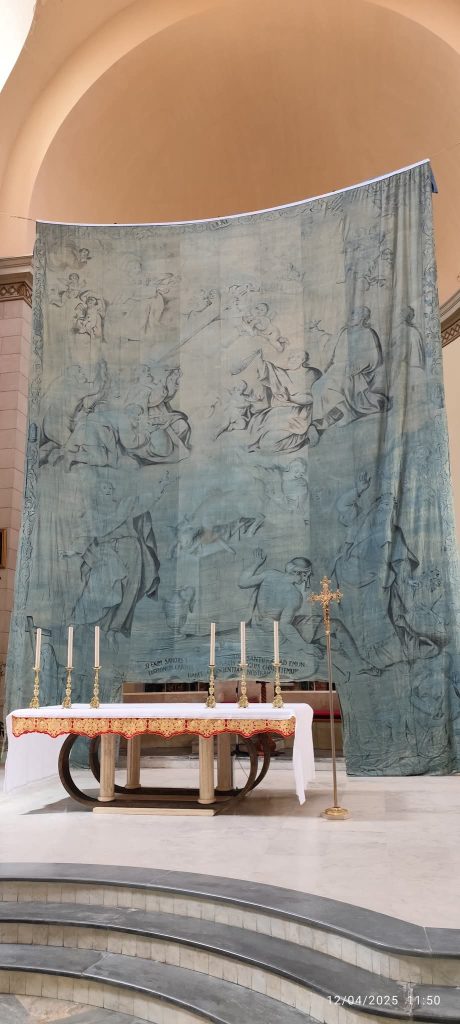
Author: Giuseppe Gesualdo Russo (Barcelona Pozzo di Gotto (?), documented between 1770 and 1805)
Date: 1791
Material: Oil on canvas
Dimensions: cm 860×655
Location: Milazzo, cathedral of Santo Stefano Protomartire
Among the similar types of works, the Lenten cloth stands out for its complex iconographic programme and rich in theological suggestions. Coming from the church of San Giacomo, the large surface of dyed linen welcomes, even in the decorative parts, Christological allusions and emblems of the Passion in the framework of a studied syncretatism between the Old and New Testament. Known in the Nordic tradition as Fastentucher, the Lenten cloths are linked to the reading of the passage Giovanneo on the hiding of Christ during the first week of Passion according to the Tridentine calendar to be removed from the presbyterial area on the night of Holy Saturday to the pronunciation of the verse “velum temples scissum est”. In its penitential function the velum alluded to the precious fabric laid between the columns of the temple of Solomon to separate the area of the Ark from the rest of the building and symbolized the darkness that obscured the minds of men before the Passion of Christ. The removal, as still happens with scenic emphasis in many Sicilian centers, symbolized “the truth of the divine law revealed to humanity through the sacrifice of Christ”. The formal characteristics also refer to the penitential climate, starting from the use of cheap linen in reference to the fabric that had wrapped the body of Christ, until the adoption of a monochrome painting as a poor technique, It lacks an elaborate chromatism and therefore suitable for the Lenten spirit.